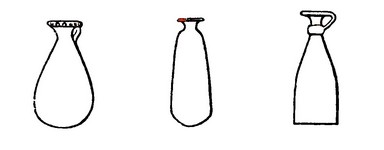
The alabastron is a long-bodied vessel, with a flat disk for the mouth and a rounded bottom. It is handleless, although some examples have eyes or lugs by which thread could be attached. It seems primarily to have been a vessel for perfumed oil, as indicated by scenes on vases depicting it in use, e.g., by women after bathing or for athletes. The shape has a long history in Corinth, but is only preserved in Athenian pottery from the mid-sixth century. Examples of the shape have been found in a range of materials, including alabaster. The Greek term for this stone - alabastron of Egyptian origin - probably reveals the inspiration for the shape, and many examples are covered with white-ground, as if to imitate the stone.